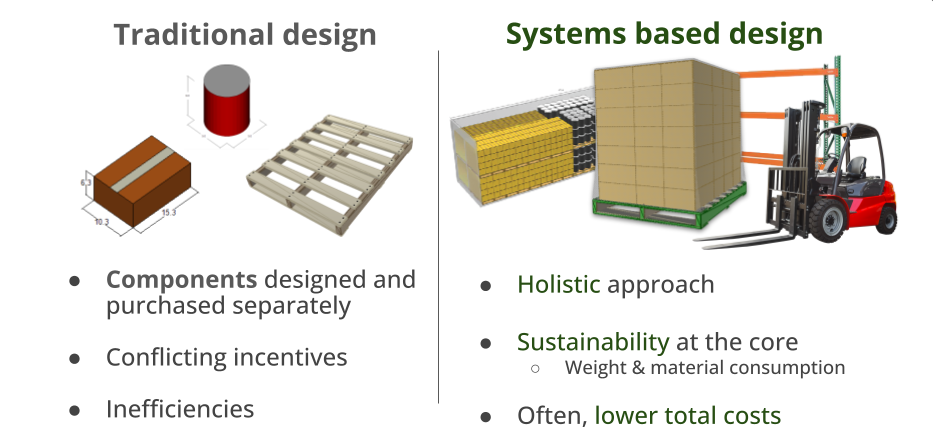Introduction to Systems Based Unit Load Design
Traditional unit load packaging design
Traditionally, the responsibility for unit load design is fractured within an organization. Different internal buyers working on different teams design the system, each with an incentive to reduce the cost of the component over which they have responsibility. This approach tends to lead to a reduction in packaging quality and a rise in material handling incidents over time as different departments look to packaging as a way to cut costs.
Systems based unit load design
When a unit load is designed as a complete system rather than a combination of individual components, more material- and cost-efficient unit loads are realized. This design approach is known as systems based unit load design. There is a strong research basis for systems based unit load design that includes decades of published studies into the properties and interactions surrounding unit load design.

Beyond product design, incorporating reuse into distribution packaging design has an even greater potential to reduce the costs and impacts of packaging and distribution. Y.G. Packaging Solutions specializes in the implementation of returnable distribution packaging systems and the reduction of impacts of one-way packaging systems.
Advantages of systems based unit load design
Research from Virginia Tech’s Center for Packaging & Unit Load Design shows that even isolated improvements to unit load design using systems based unit load design can reduce the costs and environmental impacts of distribution packaging systems significantly.
When the dozens of best practices for design and use of distribution packaging identified by the scientific community are put into practice, these effects are even greater. In a later section, we will show how we use systems based unit load design within our eco-design process to reduce a customer’s environmental impacts by 15% and reduce their packaging spend by 5%.
Next steps
Next, we will discuss the importance of eco-design for distribution packaging from economic, environmental, and risk management perspectives.
